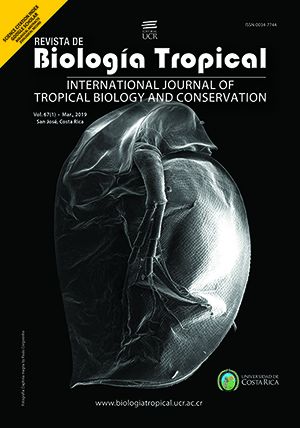Resumen
Abstract: Seaweeds are accessible and important marine organisms from coastal zones, which have shown their nutritive potential as food or additive. In the coastline of Ecuador these organisms are relatively abundant, but their biochemical composition has not been adequately studied. Therefore, the aim of this research was to evaluate the proximate composition of seven seaweeds (four red, two brown, and one green) collected from Salinas Bay, Ecuador, as a contribution to the knowledge of the nutritional potential of these organisms that belong to this region. Moisture, ash, fat, fiber and protein contents were determined by standard protocols, while carbohydrates were obtained by difference. Energetic content (or caloric profile) was calculated according to the contributions of macromolecules (fats, proteins and carbohydrates). The parameters in highest proportion found in all species were carbohydrates (32.2-45.5 %) and minerals (or ash, 25.8-36.7 %), which play a significant role in human nutrition and the food industry. Furthermore, protein, fiber, and fat contents were relatively low, with values around 4.7-8.0 %, 0.9-5.0 %, and 0.3-3.0 %, respectively, indicating these organisms are a good option as healthy food. According to statistical analysis (ANOVA), each nutritive parameter was significantly different among the species (p<0.05). Results indicate edible seaweeds from Ecuador have potential as nutritious food that could offer between 1500-2000 kcal kg-1, which is higher than many common vegetables.
Key words: macroalgae; nutritional profile; seafood; Rhodophyte; Phaeophyte; Chlorophyte.
##plugins.facebook.comentarios##

Esta obra está bajo una licencia internacional Creative Commons Atribución 4.0.
Derechos de autor 2019 Haydelba D'Armas






